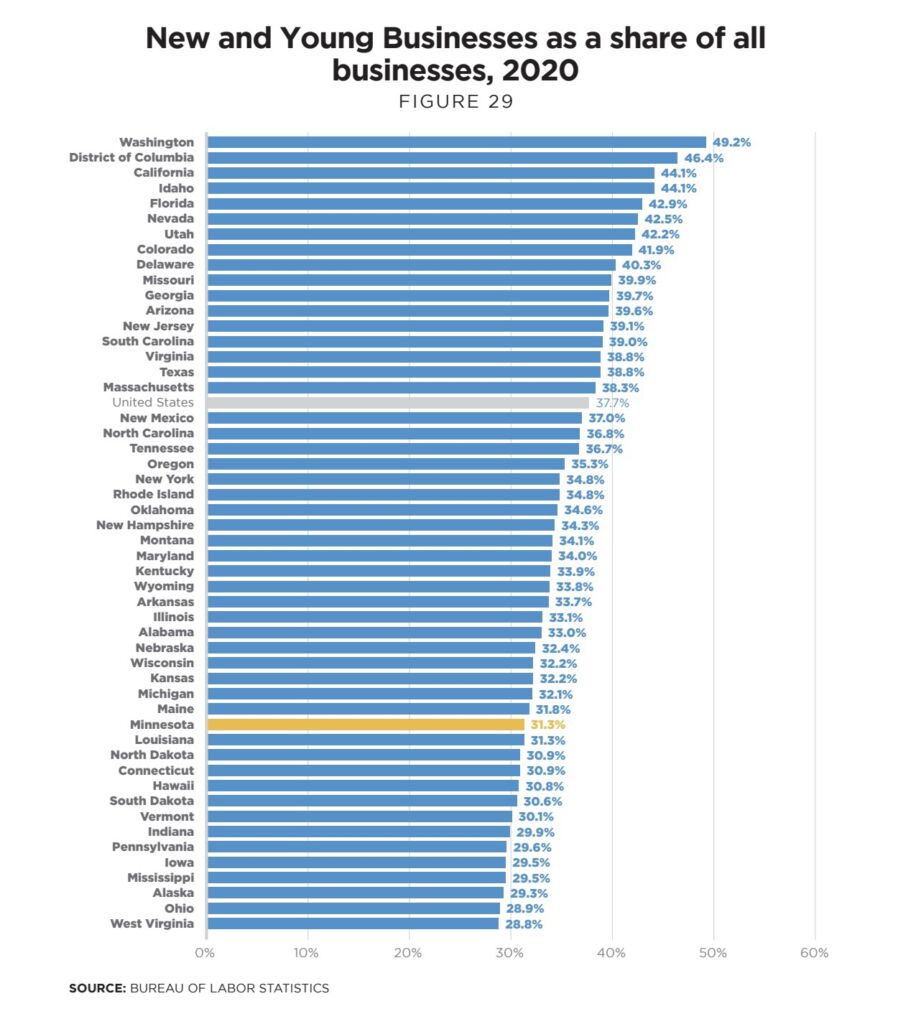Governor Walz’s economic council is forgetting about our high taxes
Two weeks ago, Governor Tim Walz unveiled a 10-year plan for boosting Minnesota’s economy. This plan is based on discussions from the governor’s 15-member Council on Economic Expansion which he launched last September. The council has finalized a report with its recommendations on what can be done to expand Minnesota’s economy.
According to the report:
The Governor’s Council on Economic Expansion (“Council”) was established to catalyze progress toward an equitable, inclusive, sustainable, and resilient economy.
This was in response to the changes that have come with the COVID-19 pandemic and other events that have put Minnesota at an “inflection point.” Governor Walz charged the council to:
seize a unique opportunity in a moment of distruption to imagine an economy that is equitable, inclusive, sustainable, resilient, and centered on Minnesota’s greatest strength — our people
Equity and inclusion are two words that are thrown around a lot but rarely defined. So, it’s hard to imagine who’s to say what an equitable or inclusive economy would look like — as envisioned by Walz and the council — and whether it is even the role of anyone to plan for equity and inclusiveness. It is also unlikely that anyone, including the state, knows how to achieve the so-called equity or inclusiveness — assuming it is something we should even be aspiring to achieve.
But as American Experiment has been pointing out the last couple of years, Minnesota’s economy is indeed in trouble. Our state has been lagging behind most states on economic and income growth, business creation, entrepreneurship, and many other important economic indicators. So, something must be done to address our lackluster performance and make our state more competitive.
But unfortunately, on that front, Walz’s expansion plan falls short.
What the plan proposes — more spending
In our 2020, report, American Experiment noted that Minnesotans do certainly enjoy a higher standard of living compared to most states. Our GDP per capita levels are high, and so are our income per capita levels.
However, Minnesota’s economy is not growing like it used to. Moreover, our economy is not growing as much as the economies of other states. While our state has high employment levels, our workers are not as productive. Moreover, we fail to attract high skilled workers from other states. Not to mention that we lose high-skilled workers to other states.
When it comes to capital — one of the other big determinants of growth — Minnesota ranks below the national average. The state also ranks poorly on innovation and entrepreneurship, as illustrated by business creation data from 2020.

So, what does the council suggest we do in order to attract workers, and businesses from other states and also reduce barriers to job creation? Mostly marketing and spending.
For example, the committee suggests that the state should
Establish a $160M closing fund with an agile governance structure to increase the availability of business incentives for firms considering starting in or relocating to Minnesota.
And to make Minnesota a great state to invest, work, and start a business, the state
should invest $3.5 million upfront and $15.20 million per year marketing the state to employers and to employees in in-demand categories
The state should also
Invest in marketing Minnesota as a great place to live and do business by highlighting arts, the outdoors, and culture in the state.”
What about our high taxes?
The council does offer broad recommendations on a lot of other things. But much like what to do about attracting businesses into the state, those proposals mostly hinge on more spending or more government involvement.
Ask the council what the state should do about the childcare crisis, and you get solutions like “invest….”, “continue to fund..”, “provide funding….”, or something of that nature. Similarly with K-12 education, what the state needs to do, among other things, is to invest and fund the public school system.
What about housing? The state needs to “strengthen homebuyer assistance”, or “expand supplemental income supports that families and individuals can use for housing costs.”
Nowhere in their report does the council mention our high taxes and how they stifle business and job growth; make our state uncompetitive in the global market; drive productive workers out of the state, and discourage innovation.
Minnesota has the third highest top rate income corporate tax, and the sixth highest individual income tax rate. Yet we are supposed to believe that some marketing about our arts and culture would bring workers to the state.
If Minnesota was such a great place to live and do business due to our arts, outdoors, and culture, our highly productive workers would not be leaving in the first place. And our business creation rates would not be so dismal. And we certainly would have little use for marketing.
High taxes are a big problem
High taxes, as the American Experiment, continue to show are at the center of our economic mediocrity. Lawmakers who believe that it is possible to grow the state’s economy without doing anything about those high taxes are only lying to themselves.